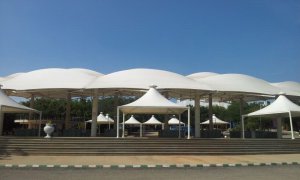Fluomax WIKI
How to do it in brief
Technical textiles (or fabrics) for tensile architecture applications are composite products with differing behaviours. Choosing the right product is a matter of defining the various project requirements, including mechanical, physical and aesthetic functionalities. Processing these fabrics to reach the defined results, however, is a matter of know-how. This small wiki will help define the required properties and support the production process.
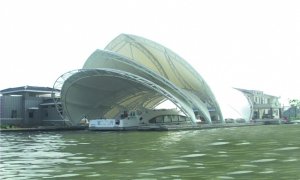
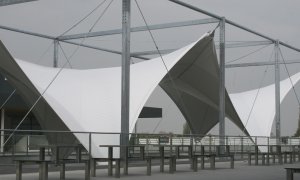
Tensile architecture design basics
Tensile surfaces are basically characterized by curved shapes. They have always to be double-curved, a simple sail, for example, needs at least 4 points of tension. The surface shape and all anchoring elements need to be designed to withstanding all possible loads.
Choosing the right fabric strength
The mechanical behaviour of the fabric is a critical factor for tensile surfaces. The fabric is a structural element and as such has to meet the necessary engineering and safety criteria. It is a good rule to estimate a proper safety factor by considering the maximal working load.
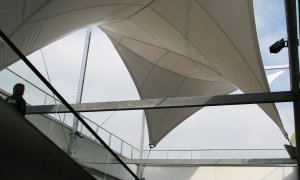
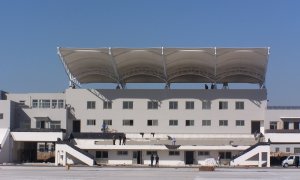
Cutting and patterning
In the final stages of the design process, the surface is patterned into fabric parts in 2D, for assembly by welding in 3D shape. Patterning is a process of accurate geometrical definition, carefully dimensioning the single pattern and the precise percentage of decompensation.
Welding and assembly
SIOEN fabrics can be easily welded with high frequency machines or by hot air processes. It is good practice to observe the minimum seam width for the type of fabric used. Those are 40mm for type I, 60mm for type II and 80mm for type III fabrics.
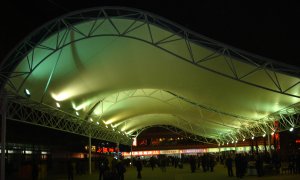
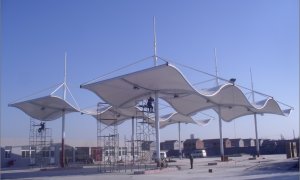
Packaging and installation
While Sioen fabrics fold well, in packaging the finalized surface, thought must be given to the optimal folding so as to avoid dangerous or damaging unfolding tasks on the worksite.
Installation is the real know-how part of the process as here beside of founded knowledge also a great care and skill are mandatory. Expertise is required during lifting and tensioning of the surface. Optimal weather conditions should be sought for these operations, never below 5°C or with wind speed greater than 5 m/s. Lifting and installation operation by rain weather shall consider proper water evacuation or simply been avoided.
Inspection and maintenance
Permanent monitoring of the project’s performance is essential. Sioen fabrics are engineered for long-lasting properties, but a visual inspections must be conducted to check for obvious damage or for other deficiencies. The maintenance process needs to include:
• periodical or specific controls where necessary
• periodical or specific cleaning if needed
Eventual repairs to the fabric are an easy task but require an expert hand.
